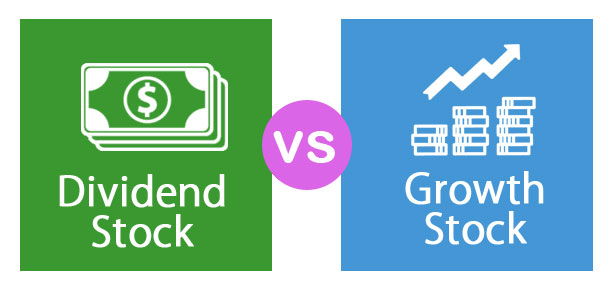Dividend Stocks vs Growth Stocks: Dividend stocks provide regular income and lower volatility, ideal for conservative investors seeking steady returns whereas Growth stocks offer high capital appreciation potential but come with increased volatility, suitable for investors aiming for substantial long-term growth.
When it comes to long-term investing, two popular options that investors often consider are dividend stocks and growth stocks. Both types of stocks offer unique advantages and cater to different investment objectives. Let’s explore the characteristics of dividend stocks and growth stocks to help you make an informed decision on which strategy aligns best with your long-term financial goals.

Dividend Stocks
Dividend stocks are shares of companies that distribute a portion of their earnings to shareholders in the form of dividends. These stocks are favored by investors seeking regular income and stability in their investment portfolio.
Here are some key points to consider about dividend stocks:
- Income Generation: Dividend stocks provide a steady stream of passive income through regular dividend payments, making them attractive for investors looking for consistent cash flow.
- Historical Performance: Dividend-paying companies tend to be more established and stable, with a track record of consistent dividend payments even during market downturns.
- Dividend Reinvestment: Investors can reinvest dividends to purchase more shares, leading to compound growth over time and increasing their overall returns.
- Risk Management: Dividend stocks are often considered less volatile than growth stocks, offering a defensive strategy during market fluctuations.
Remember:
Slower growth: Dividend payouts prioritize income over reinvestment, potentially limiting sky-high stock price growth.
Growth Stocks
Growth stocks are shares of companies that reinvest their earnings back into the business to fuel expansion and capital appreciation. These stocks are favored by investors seeking high returns and capital growth over the long term.
Here are some key points to consider about growth stocks:
- Capital Appreciation: Growth stocks have the potential for significant capital appreciation as the company grows and increases its market value, offering the possibility of higher returns.
- Innovation and Expansion: Growth companies are often at the forefront of innovation and technology, driving rapid growth and market outperformance.
- Volatility: Growth stocks can be more volatile than dividend stocks due to market expectations and investor sentiment, leading to higher risk but also higher reward potential.
- Diversification: Including growth stocks in a portfolio can provide diversification benefits and exposure to different sectors and industries with growth potential.
Keep in mind:
- Higher volatility: Growth stocks are more susceptible to market fluctuations, so buckle up for a potentially bumpy ride.
- Uncertain dividends: Growth companies often prioritize reinvestment over dividends, so regular income streams are less likely.
Dividend Stocks vs Growth Stocks Long-term
| Aspect | Dividend Stocks | Growth Stocks |
|---|---|---|
| Emphasis | Regular dividend payments | Share price growth |
| Returns | Consistent dividend income | Capital gains from stock price appreciation |
| Company Behavior | Allocate profits as dividends | Reinvest earnings for long-term growth |
| Investment Strategy | Focus on dividends and stability | Prioritize companies with growth potential |
| Cash Flow | Steady cash flow | Less predictable cash flow |
| Bonus | Price increase upon selling is a bonus | Dividends (if any) are secondary |
How to choose the right one?
When deciding between dividend stocks and growth stocks for long-term investing, it’s essential to consider your investment goals, risk tolerance, and time horizon. Dividend stocks offer stability, income, and lower risk, while growth stocks provide the potential for higher returns and capital appreciation. A balanced approach that combines both types of stocks can help diversify your portfolio and optimize your long-term investment strategy for sustained growth and income generation.
Which is better for Long-Term Investing?
The choice between dividend stocks and growth stocks for long-term investing depends on your individual financial goals, risk tolerance, and investment strategy. Dividend stocks are suitable for investors seeking regular income and stability, while growth stocks are favored by those looking for higher capital appreciation and growth potential. A balanced approach that combines both types of stocks can provide diversification and optimize long-term investment returns.
Conclusion
Both dividend stocks and growth stocks have their own unique advantages and disadvantages. While dividend stocks may be a good choice for income-seeking investors, growth stocks may be a better choice for investors who are willing to take on more risk and have a longer investment horizon. By understanding the differences between these two types of stocks and evaluating their own investment goals, investors can make a well-informed decision about which one is the better choice for them.
